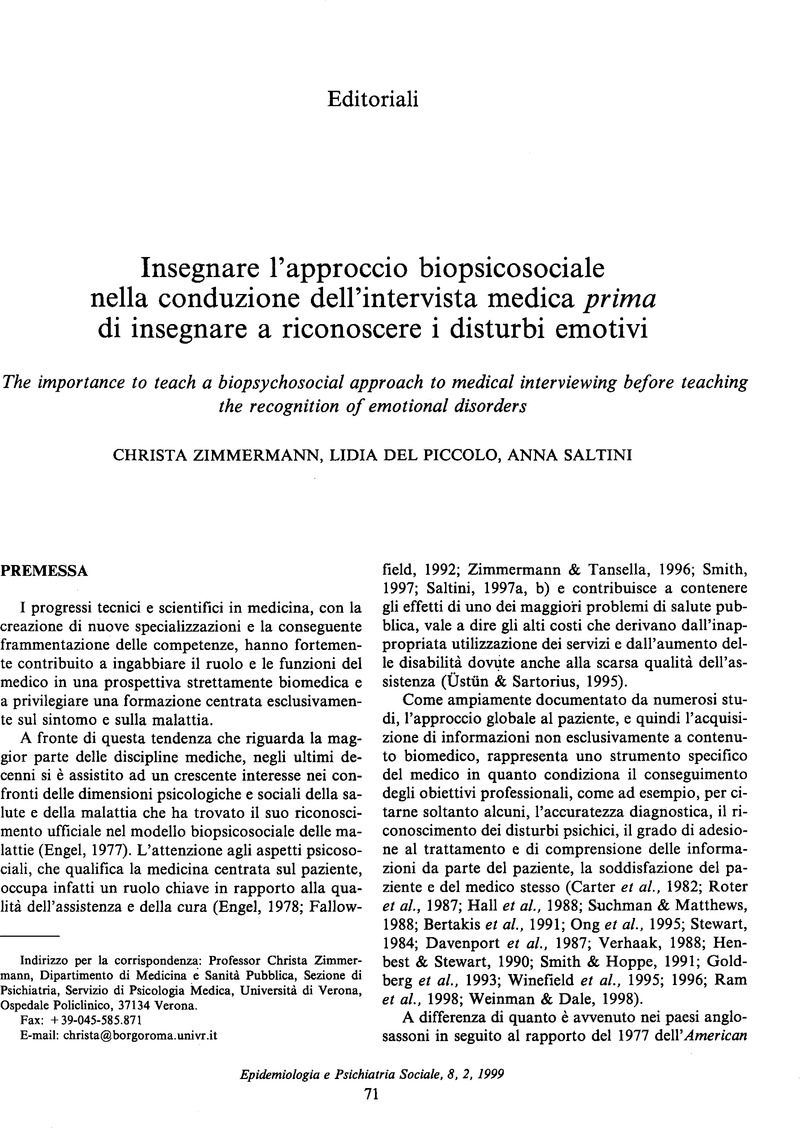Crossref Citations
This article has been cited by the following publications. This list is generated based on data provided by Crossref.
Del Piccolo, Lidia
2000.
Psycho-social problem disclosure during primary care consultation.
Epidemiology and Psychiatric Sciences,
Vol. 9,
Issue. 4,
p.
257.
Goss, Claudia
and
Renzi, Cristina
2007.
Patient and citizen participation in health care decisions in Italy.
Zeitschrift für ärztliche Fortbildung und Qualität im Gesundheitswesen - German Journal for Quality in Health Care,
Vol. 101,
Issue. 4,
p.
236.
Arcuri, Luciano
Montagnini, Barbara
Calvi, Gabriella
and
Goss, Claudia
2013.
The perception of shared medical decision making of expert and lay people: Effects of observing a movie clip depicting a medical consultation.
Patient Education and Counseling,
Vol. 91,
Issue. 1,
p.
50.
Pietrolongo, Erika
Giordano, Andrea
Kleinefeld, Monica
Confalonieri, Paolo
Lugaresi, Alessandra
Tortorella, Carla
Pugliatti, Maura
Radice, Davide
Goss, Claudia
Heesen, Christoph
Solari, Alessandra
and
Oreja-Guevara, Celia
2013.
Decision-Making in Multiple Sclerosis Consultations in Italy: Third Observer and Patient Assessments.
PLoS ONE,
Vol. 8,
Issue. 4,
p.
e60721.



